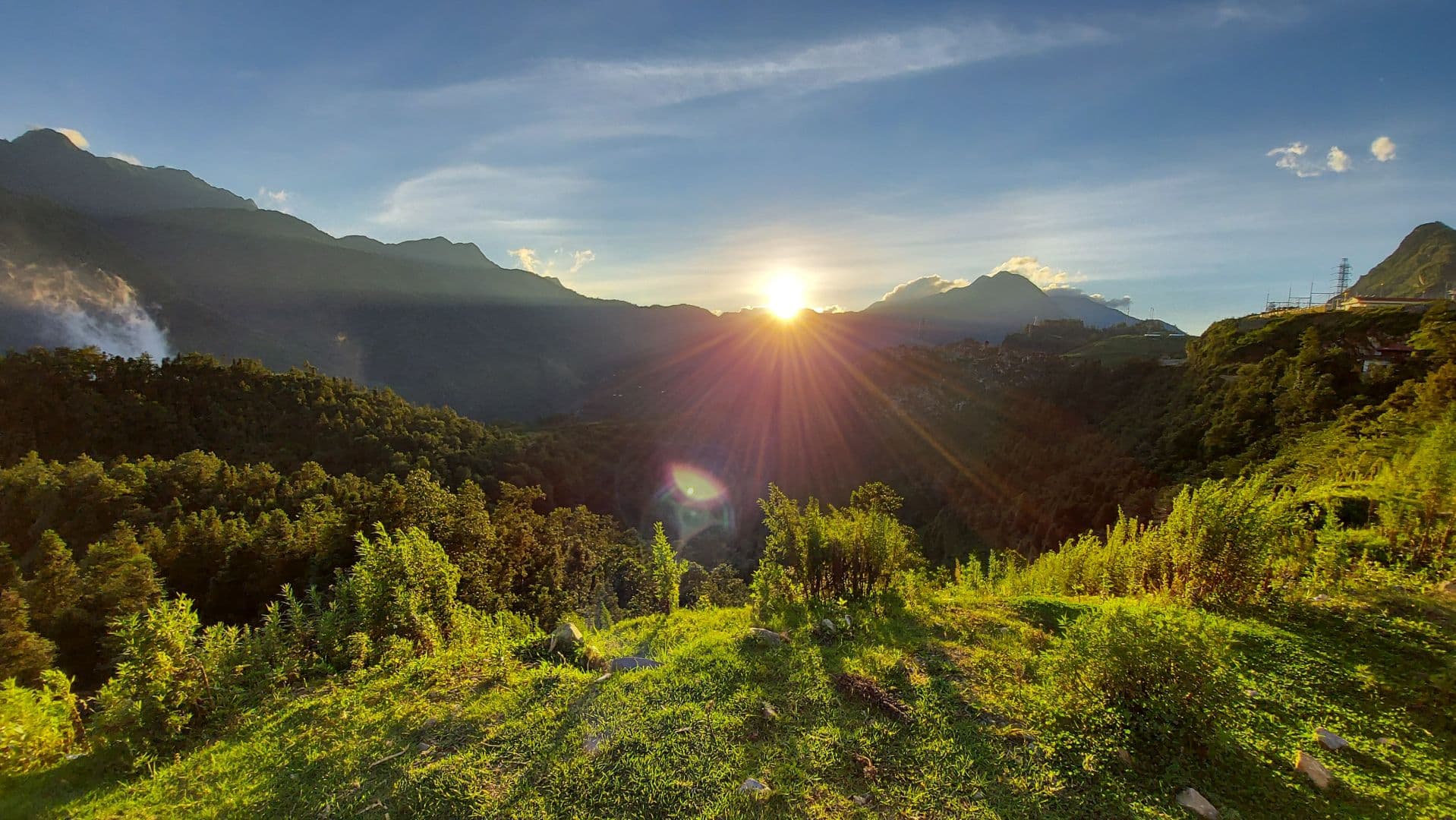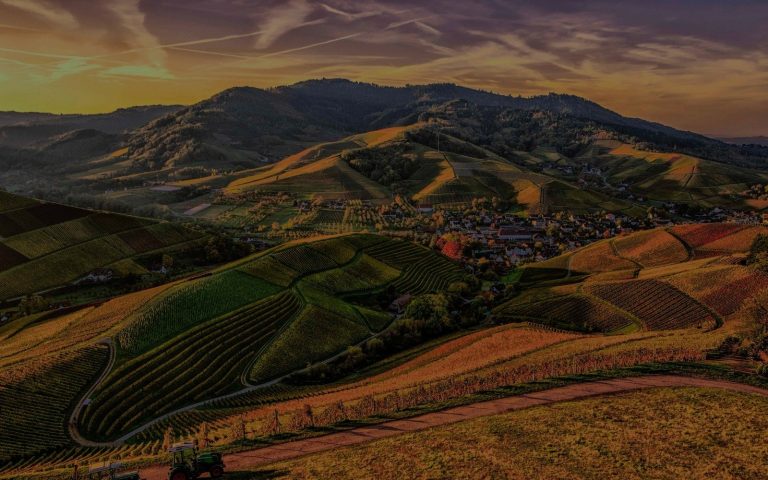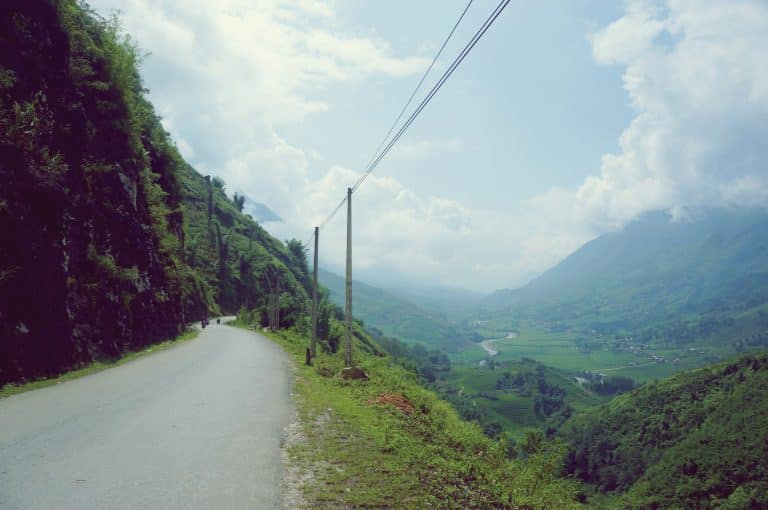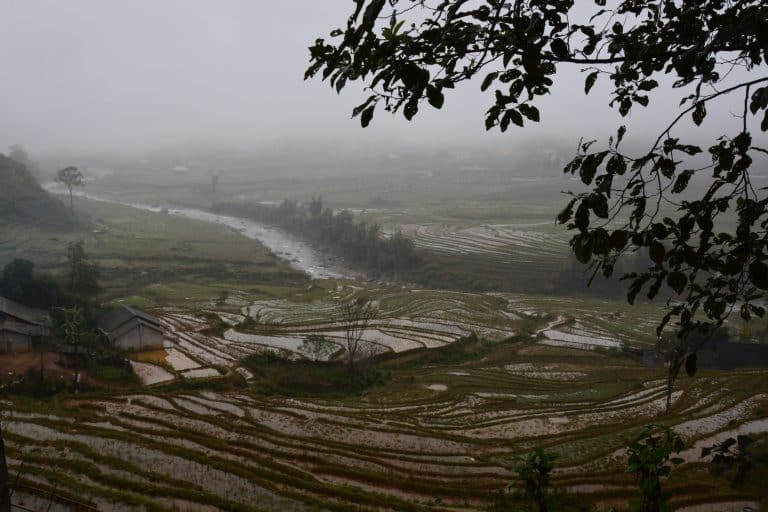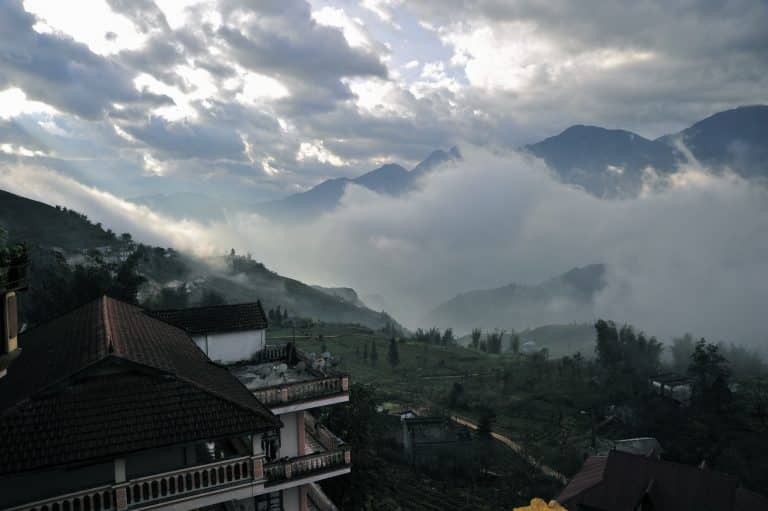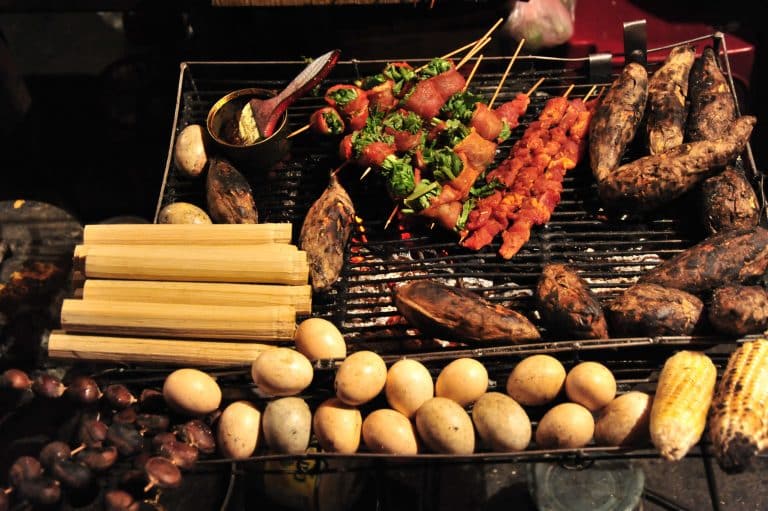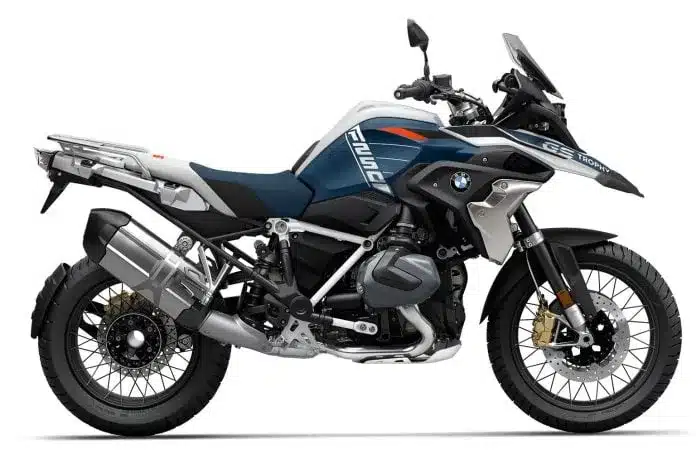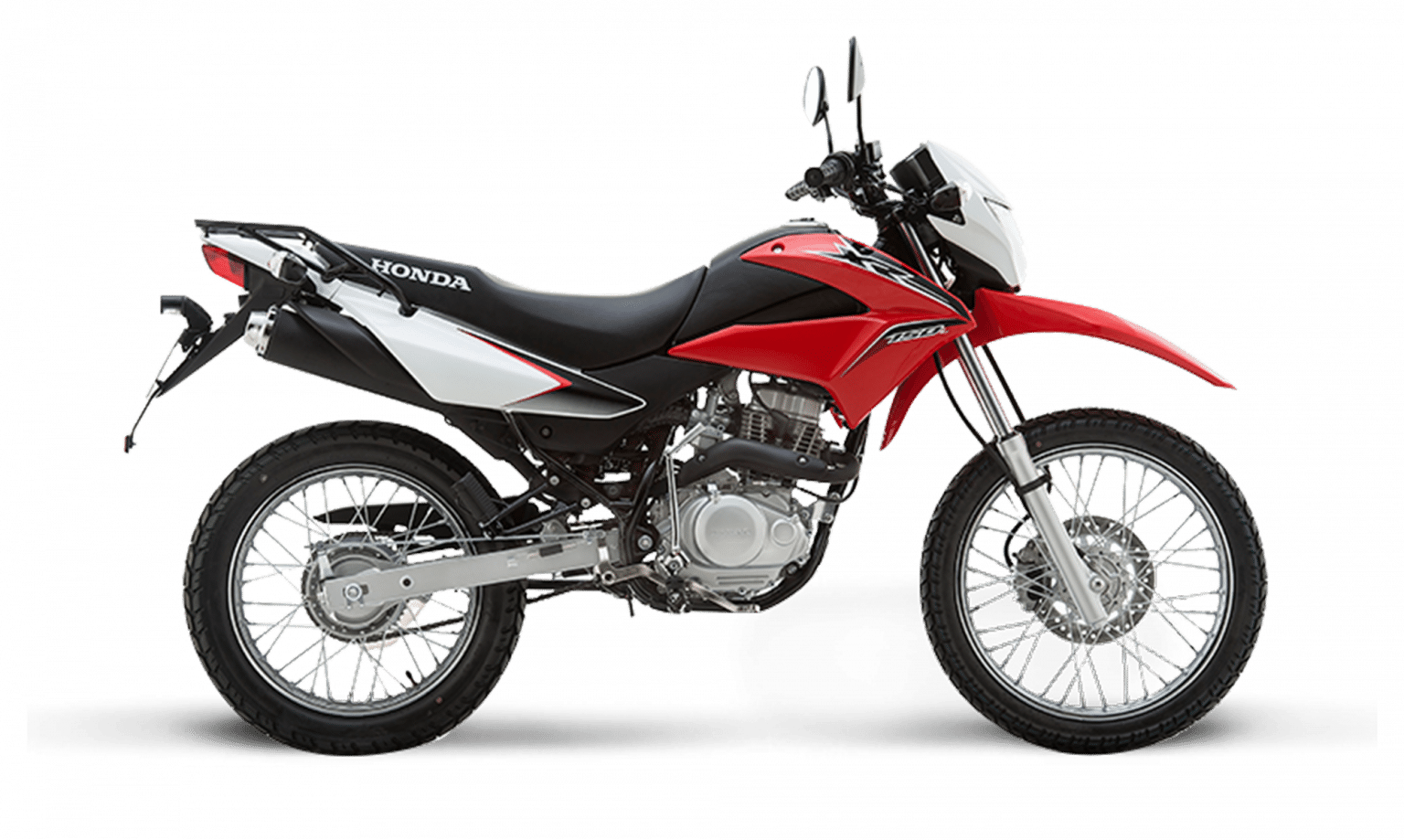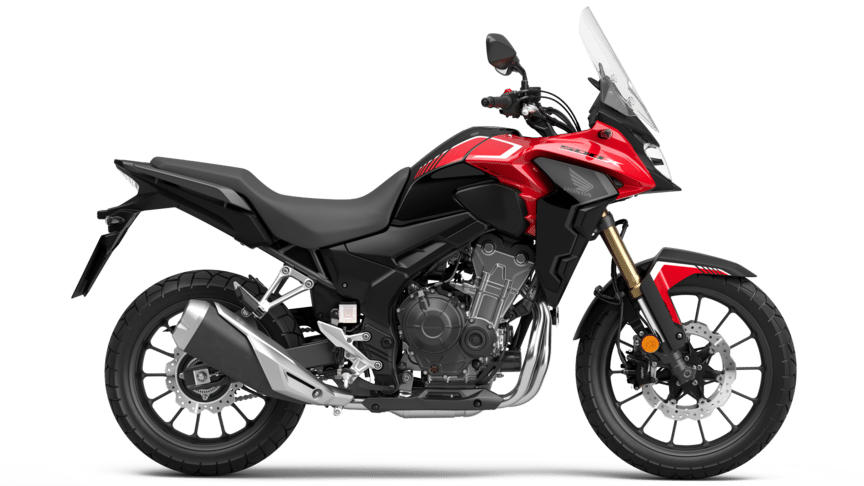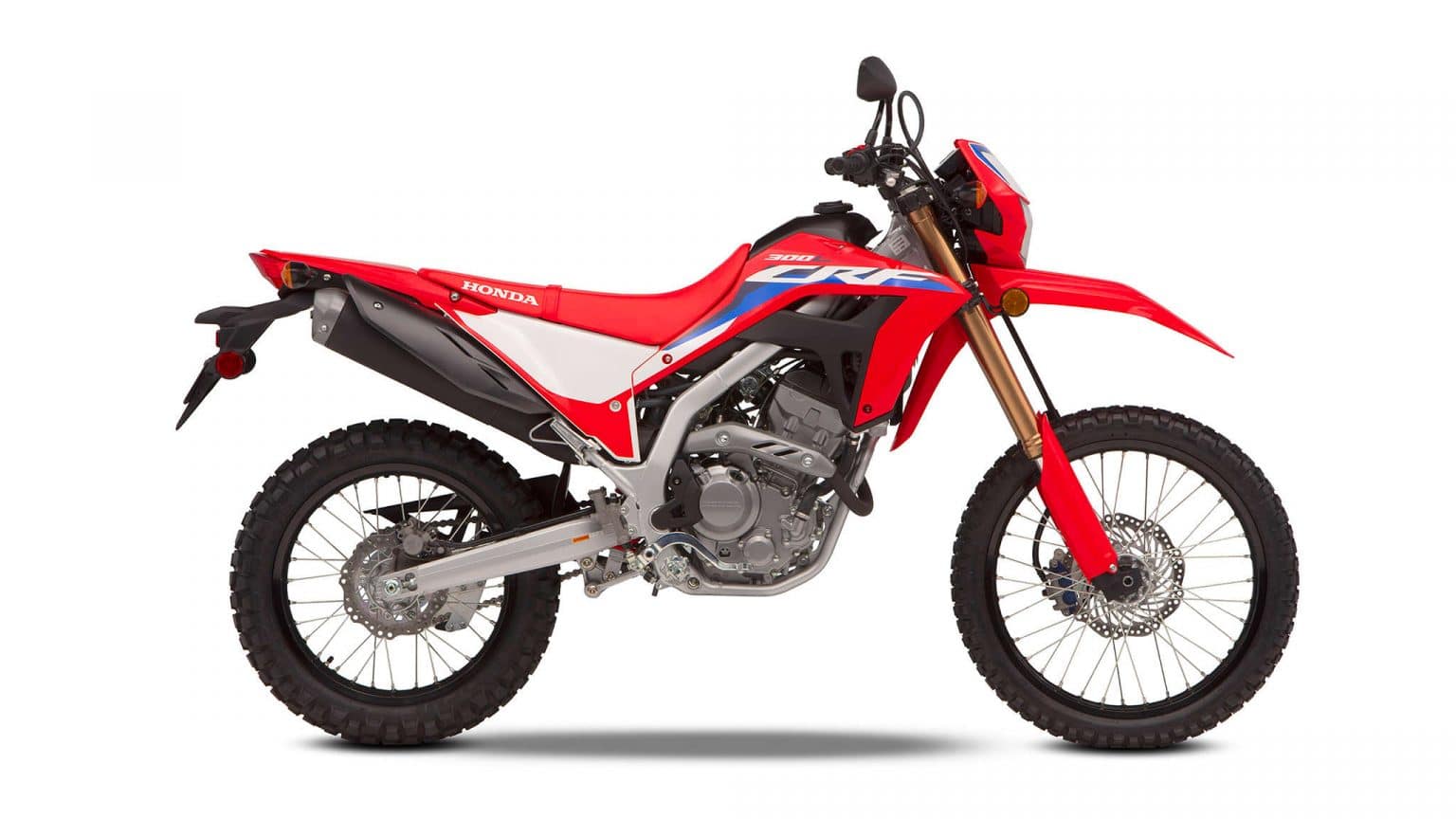It's That Popular for a Reason!
Sapa (or, Sa Pa) is high up on the tourist bucket list when it comes to Vietnam and renting a motorbike in Sa Pa is a popular choice. You have the freedom to roam around the town and into the countryside for some of the best sightseeing. It’s a fantastic destination, and features on o good number of our most popular motorcycle tours, including the 12 day Great Loop and 7 day Military Sweep tours.
Your first choice is whether or not to travel to Sa Pa by motorbike, or whether to choose a different form of transport. If you need to rent a motorbike in Sa Pa, then there are a few checks to make before driving away and a few things to be wary of when returning any motorbike.
After that, there are many great places to stay and to visit in Sa Pa. If you decide it is a place you’d like to visit, then you will definitely have a good time.
SaPa: A Background Story
Sa Pa lies 350Km away from Hanoi at just over 1,500m elevation in the northern province of Lao Cai around 35Km from Lao Cai City and a train station. It takes about 5 hours to get to Lao Cai and about 1 hr to travel up to the hilltop resort. You can either drive yourself on a motorbike or get a bus/train from Hanoi. After, it is a small minibus up to Sa Pa town from Lao Cai train station.
Originally, it is said to have been built by the French as a retreat from the summer heat of Hanoi. In reality, it is just one of a long line of military installations stretching across the North, used during the French colonial era. The French have long gone and now it has turned into a major resort, which is perhaps too successful for its own good. The signs of over-tourism are quite evident as with many sites in Vietnam.
Sa Pa is the traditional home to five of the 54 ethnic minority groups in Vietnam: H’Mong (also known as Miao), Red Dao (Yao), Tay, or Choang (Zhuang), Giay and Phu La (Yi). These groups share some traditions and cultures with others across the border in China and beyond. You can identify the different groups by the clothing they wear, the organization of their villages, the style of their houses, and sometimes by the elevation at which their villages lie.
There are many great places to visit ranging from the mighty Fansipan Mountain to Silver Waterfall to Cat Cat or Ta Van village. There is something for everyone even those that seek nightlife.
Google Map
How To Get To SaPa
Route 1 - From Lao Cai - 35 km
The quickest and most direct route from the centre of Lao Cai is also the busiest and probably the most dangerous. It is definitely the least enjoyable.
You should fill up with petrol from the petrol station in town (marked on the map) and then head out of town over the Pho Moi bridge. Then, cross over the QL4E and under the Hanoi- Lao Cai Expressway (CT05). From here on you take the QL4D which quickly becomes steep and winding but has also been widened in recent years to make it more like a race track. Watch out for large buses and coaches taking the corners wide. You follow the river valley for around 25km and then ascend to the town.
This is not a great route at all but it is the fastest.
If this is the last leg of your trip(all the way from Hanoi), you will probably not have time to get further than central Sa Pa and so should look for accommodation there.
Route 2 - From Bat Xat (back road) - 75km
If you have plenty of time, and you do if you arrived by train, you can take a long detour and get to Sa Pa from Bat Xat. Again, make sure your beast is fully fueled and then head North towards the Vietnam / China border crossing. You take Coc Leu Bridge and then continue North on the DT156 past Bat Xat and to the junction with the DT158. This is a great route because you will skirt along the Red River which marks the border with China and you will be so close that you can see Chinese people in their homes on the over bank.
The 158 then takes you along the valley up to Bam Xeo where you turn South towards Sa Pa on the DT155. At the end of the 155 and near to Silver Waterfall on the QL4D and you will get your first chance to view Fansipan and the Cable Car. You can take the 4D into Sa Pa directly or stop off and the Cable Car Station if you fancy going up the mountain immediately.
You have the choice of staying in central Sa Pa or further down the valley as you will probably have enough time and energy to travel further.
Route 3 - From Y Ty - 70 km
You shouldn’t really be in Y Ty as it is a border region and you will need special permits to stay overnight there. However, if you are passing through and are heading back to Sa Pa you simply follow the DT158 to the junction with the DT155, abovementioned, and then continue as above over to central Sa Pa town.
This is not a difficult or time consuming route so you will then have the option of staying in central Sa Pa or anywhere down in the valley.
Route 4 - From Lai Chau - 70 km
There are two choices of route for the first 25km of this journey and they are very similar. The only thing to say is that the red route is the main road and may have more traffic, whereas the black route is more of a back road and will be quieter.
Once you have gotten to Tam Duong (Putaleng) you will then have to go on the one main road over to Sa Pa. This is a good road and very easy to drive. It is only when you get to the O Quy Ho Pass that it will become steep and more treacherous. Now it is time to look out for large trucks, whose brakes may have failed, coming at you down the pass.
You will hopefully get great views of Fansipan and also have a chance to stop at the Glass Bridge for photos before making it over the pass and heading down to Sa Pa.
It is often much warmer on the Lai Chau side of the mountains due to the warm breeze from Laos and you’ll likely find Sa Pa to be cooler and maybe foggier. Take great care when riding and read about riding in the fog here.
This is an easy route and if you leave early from Lai Chau you can easily make it to any place down in the Muong Hoa Valley or Seo My Ty. Just remember to call ahead and tell them you are coming.
Route 5 - From Than Uyen - 100 km
If you are coming from Than Uyen, you will have skirted along the Hoang Lien mountain range on the QL32 until you hit the 4D at the T junction about 5km out of Tam Duong. You turn right and follow the 4D, the same as above, until you find yourself in Sa Pa. This is a long route so you should consider staying in central Sa Pa for at least this night.
Route 6 - From Pho Lu (back road) - 55 km
You will have been driving up from Hanoi if you are going to take this route and it is a welcome change from the highway. You follow the DT 152 at first, which passes some pretty grim industrial zones but then starts to follow the river to Nam Cun Dam and Thanh Phu bridge.
Cross the bridge and then slow down because you will be in the lower Sa Pa valley and there will be quite a few homestays where you can stay. It would be a good idea to choose to stay down here at least overnight before visiting central Sa Pa. As you head higher the area becomes more crowded with people and homestays and much more commercial.
Motorbike (longer routes)
We have shown 6 different options to get to the town of Sa Pa itself. However, if you are planning to visit Sa Pa as part of a longer tour, then we have recommendations on how to do this. The journey from Hanoi in these instances could range from 1 to 6 days. One excellent example of this is the Cloud Hunter tour. Take a look.
How To Get To Sa Pa by Train
This is also relatively simple and the cost depends greatly on the type of ticket you buy. There are several days and evening trains as well as there are hard seats, soft seats, hard sleepers, and soft sleepers. It is a good idea to get a soft sleeper so that you can get a good night’s rest. You will then arrive in Lao Cai at around 6 am and Sa Pa before 8 am.
UPDATE:
Currently, the Hanoi Lao Cai train is only running at weekends. Therefore, you will need to time your trip to either travel to or from Sa Pa on a Friday or Saturday, if you wish to travel one way like this.
You can easily put your motorbike on the train in either Hanoi or Lao Cai and have it transported with you to your destination. REMEMBER: The fuel will be removed from your bike before it is allowed on the train so don’t rock up with a full tank. You will lose it.
You should remove as much fuel as you can, but you will be given a little fuel at the end of the trip; it’s enough to get to the nearest petrol station.
Minibus up the hill
If you are travelling on foot, by train, you can ask your accommodation to pick you up for free at the train station and take you to Sa Pa or you can get a local minibus for around 50,000 vnd.
Tips For Motorbike Rental In SaPa
We recommend you take great care when renting a motorbike in Sa Pa. Not only can you find that the quality of the bikes is not very high, you can also find that the locals might feel it is acceptable to make a little extra money on top of the rental fee. After all, you can afford it, right? For this reason, many people prefer to rent in Hanoi, as the quality of bikes tends to be higher.
Always take care when driving a motorbike and renting property. Be aware of what may go wrong. Here are a few tips to help avoid problems:
- If you have never driven a motorbike before, do not try to learn now. VIETNAM IS NOT THE PLACE TO LEARN TO DRIVE
- Find out how long the motorbike rental is. Some shops will offer 24hrs, others will say daily and you can only rent from XX:XX am to YY:YY pm
- Also, find out if you can take the motorbike out of the town and into the countryside.
- Check the motorbike for damage before the rental. Make notes, take photos, videos, and ask the company to write this down.
- You will have to leave either a passport or cash deposit (usually 1.5 to 3M vnd). Some firms may accept a copy of a passport and others may ask for your hotel and room number.
- Test drive the motorbike first. Yes, you leave a deposit at this point, signed contract, or not.
- Check the brakes, lights, horn – everything. If anything is not working make a note and speak to them about it.
- Take the business card of the shop/hotel and put one in your pocket and one under the seat. This will help you should you need to call them or get directions.
- Check the fuel level. Make a note and return the motorbike with slightly more than that.
Mechanics in the Area
If you need mechanical assistance in the area, the first thing to do is talk to your homestay owner or the receptionist at your hotel. They should be able to advise you on a decent local mechanic. Sometimes a mechanic may be able to come to you, but more often than not, you will have to get your bike to them.
Be sure to:
- call us at Rentabike so that we can check what IS wrong and then authorise the repair
- make sure there is no extra charge if they come to you.
- not leave a bike with them unattended.
- check that new parts are being used.
- watch the repair so that you can confirm the work was done.
We have found that most mechanics in Sa Pa are quite honest but that some of them do not really know exactly what to do and need guidance. Call us so that we can be sure.
What To Bring/Wear For SaPa
When taking a trip on a motorbike in SaPa, it is a good idea to prepare a few things that you might need to use. Your rental will include a helmet but it will be low quality so you may want to bring your own.
Some things that you might need are:
- A raincoat/poncho – bring one from home or buy a small plastic one here. You don’t need to throw it away when you are finished, just give it to a local. They will use it.
- An extra poncho as a spare or to cover your backpack if it is tied on the motorbike when it starts to rain.
- A warm jacket in winter. SaPa is high up and it gets cold on a motorbike in the wet weather.
- Bungee cords should be available to borrow from the rental shop, if not buy some to strap your bags on.
- Some kind of multi-tool just in case you need to fix a loose bolt or worse – if you have a spill.
- A phone that has a local SIM, GPS, and 4G. These sim cards are easy and cheap to buy. Remember to bring a Battery Pack for charging.
- Water – or at least a water bottle. In summer it is ridiculously hot and humid.
Tips On The SaPa Area
- Try to avoid visiting at weekends during the summertime or on public holidays. It won’t be as fun as it will feel like half of the world is climbing Fansipan and it will be hard to find a quiet place.
- If you do visit at this time, you should book accommodation and a motorbike in advance. Expect to pay at least double and maybe even triple the standard rate at busy times. The hoteliers know it is a long way back down the mountain.
- When driving in the area be careful of characters that might want to steal the motorbike or something from it. Also, beware that you might be approached by another driver claiming that you clipped them and knocked them off their bike. They will then demand compensation, whilst screaming and shouting. It’s a scam. Walk away.
- It is better to stay down in the valley.
- As with other places, agree on the cost of any service or product before using it.
- Do not give money or candy to the local children. It will only encourage them to stay out of school or rot their teeth for which they do not have the funds to have treatment.
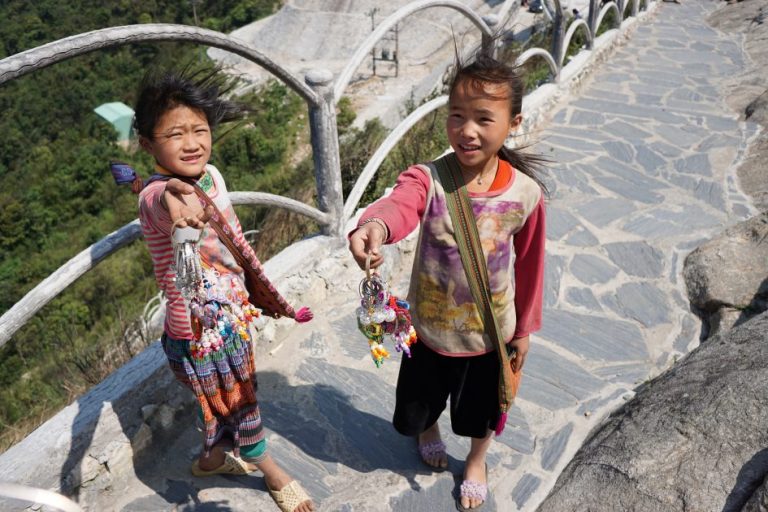
Places To Visit In and Around Sa Pa
There are so many things to see and do in Sa Pa that we cannot list them all here. To get the most out of a stay here you should try to spend a few nights and also try to stay in different parts of the area. Only then, can you even begin to get a real feel of everything Sa Pa has to offer.
Sapa Rock Church (aka Notre Dame Cathedral)
This church was built by the French and used as they, very successfully, converted the local H’mong people Christianity. It is still in use today and is a wonderful site on special events.
Ham Rong Mount
Behind the church are steps that take you up to the top of Dragon’s Jaw Mount. On a clear day, you can get great views of the town and the valley below. On misty days, there can be a creepy feeling as you climb that is very unnerving.
SaPa Love Market
Every Saturday the market is held. It is a chance for the local H’mong and Dao to come together to trade goods. There are singing and dancing and you will also see the young people hanging out together.
Cat Cat Village
This is the easiest place to get out of town and is not even a 5-minute drive from the main square. You drive on your motorbike passing the small H’mong villages, where you will witness life going on as it has done for centuries.
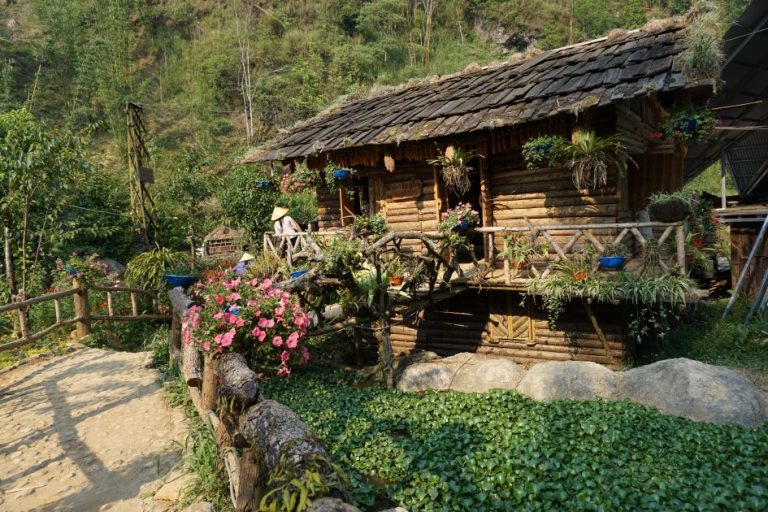
Places Nearby Sa Pa
Muong Hoa Valley
This takes a little longer to get reach but you are rewarded with a more remote landscape. There are many rocks lying slap bang in the middle of the rice paddy and some of them have strange shapes and characters carved on them. The origins of this are still a mystery and it has become a national heritage site.
Fansipan Peak
There are three options to choose from to visit the peak. The first is to take the cable car up and down. This is by far the easiest way and means that you are not too disappointed if all you can see at the top is mist. The second is to trek up, which takes two days and you sleep on the mountain and then take the cable car down. The third is to trek up and down the mountain which is rarely chosen nowadays. Obviously, before the days of the cable car, this was the only option.
It is best to take a guide for options 2 and 3 because people have died on this mountain. It is an easy enough walk to the top with a little scrambling, but it is also very easy to miss the path (especially when it is foggy) and be left stranded on the mountain. NOT FUN!
Silver Waterfall
This is about 15Km from SaPa to the Northwest towards Lai Chau. It is an easy drive on tarmac road but be careful of the traffic. It takes about 30mins to get there and is at an elevation of around 1,800m. It can be cold in winter. It is called ‘Silver’ waterfall because of the constant flow of water resembles a strip of silver.
Tram Ton Pass
Just further on from Silver waterfall is Tram Ton Pass. It is about 15 km from Sa Pa town and is the highest pass in Vietnam at 1900m. The pass marks the borders of Lao Cai and Lai Chau Provinces and very often demonstrates the different weather in the two. It can be cold and foggy on one side of the pass and warm and sunny on the other. Sa Pa is one of the coldest places in Vietnam and Lai Chau one of the warmest!
With luck, you will have clear weather as the view is spectacular.
Glass Bridge (aka Dragon in Cloud Bridge)
A little further on again and you will come to the recently built Dragon in Cloud Bridge. Even though this is the longest glass bridge in Indochina, it is only 60m long and 5m wide, but it does give visitors a 360 degree view at a height of more than 2,000m over the stunning Hoang Lien Son Mountain Range. Very often you will find a sea of clouds below you which add to the feeling of vertigo.
To get to the bridge you will need to take a glass elevator so you will experience the views all through your tour.
The bridge can carry up to 3,000 people on its triple layered, 7cm thick, walkway but only 500 visitors are permitted to be on it at any one time.
Surrounding Villages
There are many many small villages surrounding Sa Pa that will welcome tourists. You usually have to pay a small fee and this money goes towards keeping the area clean and then to providing education and community services for the locals. You can easily arrange a trek to these villages from one of the many trek tour companies in the area. You can also meet a local and let them take you to their village and have you as a paying guest.
Interesting villages to visit are:
Ta Phin Village – Red Dao (Zao) people.
Xin Chai Village – Black H’Mong people.
Lao Chai Village – Black H’Mong people.
Ta Van Village – Giay people.
Cat Cat Village – H’Mong people.
Ban Ho Village – Tay People.
Local Markets Closeby
There are many local markets in the area and you should be able to visit at least one of them. These are melting pots of local ethnic people and not only will you see them in their traditional brocade, you will be able to buy genuine souvenirs. These markets are a great opportunity to see local people and life, but you will need to be up very early because they are often winding down by 9 am in the morning. If you are late, all you will see is people making their way home.
- Bac Ha Market on Sunday
- Muong Hum on Sunday
- Ta Phoi on Sunday
- Coc Ly Market on Tuesday
- Cao Son Market on Wednesday
- San Thang Market on Thursday and Sunday
- Lung Vai on Friday
- Y Ty on Saturday
When to Visit
Sa Pa is now extremely popular with domestic tourists and you will find it very crowded at holiday times, particularly in the Summer when many people are trying to escape the heat. If there is snow there in Winter, it will instantly become overrun by locals. Weekends are also usually quite busy and it is good if you can plan to hit town during the week. If you do need to be there at the weekend the further down the valley you stay the quieter it is, usually.
So, we generally recommend that you should try to visit during the week rather than at the weekend and that you try to avoid the public holidays.
The best seasons to visit are the early Spring and Autumn as the temperatures are milder and the rainfall is less.
When is the best weather
March to May and September to November are undoubtedly the best times of year to visit Sa Pa. it is then that the weather is usually quite stable offering sunny day times and cool refreshing evenings.
The Spring is just before the rainy season and the drier weather combined with the cooler temperatures make this a good time to visit. The terraces will be filled with new rice shoots and look quite beautiful in the late afternoon sunshine as will the peach blossom. In the Autumn it is usually dry and clear with a good deal of sunshine and the rice terraces are stunning. The dry weather make trekking at this time of year a perfect option.
The Summer months will be rainy and the Winter months will be very cold.
These charts from Weather and Climate website tell the full story.
Average Temperature

Average Rainfall

Note: You may not think that temperatures look that cold in Winter but when the humidity is high and the construction of houses means you are always in a draft, it is very difficult to get warm and stay that way.
Average Humidity

Where To Stay In SaPa
Central Sa Pa Town
Central Sa Pa Town is the busiest and most crowded area. The good thing about this is that it is easy to walk around and see a lot of interesting places as well as restaurants and cafes. You will not need to have your own transport and it is easy to get a motorbike taxi should you want to visit any place that is too far from walking. Obviously, it will be a bit noisier here and you will probably be pestered by locals wanting you to buy knick knacks from them; they can be very persistent and annoying.
Cat Cat Village
Cat Cat Village is very close to the central area and now there have been quite a few nice hotels and resorts built. It is a little quieter and more scenic here but also very close to the interesting sites. It can be a good place to retreat from the central area, however, you are less likely to find budget hotel options here.
The Muong Hoa Valley
The Muong Hoa Valley is more like the original Sa Pa except that there are now tens of homestays. A huge number of the local H’Mong and Dao people are trying to take advantage of the influx of tourists and have set up their homes and purpose built buildings as homestays. These range in price and quality and it would be very wise to check the reviews carefully.
Seo My Ty Village
Seo My Ty is a small village tucked away far down the valley. You will need your own transport to get here so that you do not feel trapped. Also, you should book ahead so that the hosts will have time to prepare for your arrival. Due to the location, essential items are not readily available so turning up without prior warning will result in an uncomfortable stay. This could be a good base for trekking in the area and would get you into places with very few people.
What to eat in Sa Pa and where
If you are staying in a homestay, you will eat there. You just need to tell the host how many people and if there are any foods that are dietary concerns. The homestays cook really fresh and tasty Vietnamese dishes. There will be a good variety so there will be something for everyone. Just watch out for the traditional rice wine!!
In the main town at the top of the hill, there is a wide variety of places to eat. You just need to walk down the main strip and you have your choice of both Vietnamese and International cuisines.
If you are arriving after a few days or more of driving through the countryside you may welcome the Pizza or Indian Curry that is available. However, you would still be advised to try out some of the local specialties.
Local Food
Dishes such as Com Lam (rice in bamboo) and dried Buffalo Meat, which you can find all over Vietnam are readily available. As well as this, Sa Pa Specialties such as: Salmon and Sturgeon Hot Pot, and Thang Co (horse meat stew).
You will also find plenty of Plums, Peaches and Apricots in the local markets when in season.
Notable Restaurants
There are restaurants everywhere in Sa Pa but if you are looking for those that will be serving some of those local specialities mentioned above you could look out for:
– Song Nhi Restaurant
– Thac Bac Restaurant
– A Phu restaurant
– Hong Tai Restaurant
As well as these, you can visit the market in front of the Stone Church and find all manner of grilled delicacies in the Sa Pa Grilling Area.
Things to Consider Before Visiting
Think about what it is you want to see when you are there
What interests you and where is it? This will inform you on where you should stay. You could also spend a few nights in 2 or more locations. Then you will need to think about how you get between the two.
Think about the area you want to stay in
Does the lively and crowded town of Sa Pa appeal to you? If so, you obviously need to stay there. However, you may be more interested in trekking and a quieter more countryside vibe.
What the weather will be like - this will inform you on the above
If you plan to go when the heat is on, you will probably enjoy a place that has an aircon. Conversely, if you plan to go in the depths of winter you might like a place that has a log fire and cosy beds. The weather will also affect your ability or willingness to travel around the area.
How you plan to get there - transportation
Will you be driving in as part of a tour that you are on or will you be getting the train up. This means that you may have your own transportation or not and can affect which places you go to and stay in. If you are mobile then it is much easier to stay in a more remote place and explore there, rather than feel a little stuck without any means of transport.
Your overall plan
Generally, just knowing what you want to see and do when you are visiting will help you to make the decisions above and be prepared for your time in Sa Pa. You will have enough information to make the best choices from all there is to see and do there.
Sa Pa in a Nutshell
Sa Pa has come a very long way since it was a very small and very quiet rural village a few decades ago. It is now a mountain mecca for both local and foreign tourists alike. As such, it has something for everyone and you just need to think a little about what you want to get from the place before you visit.
